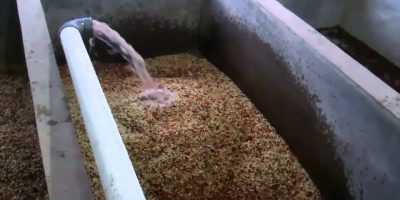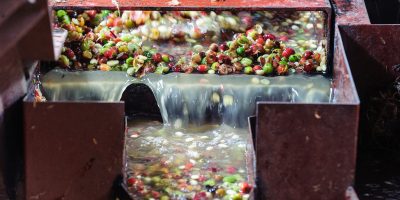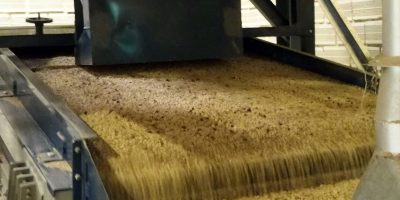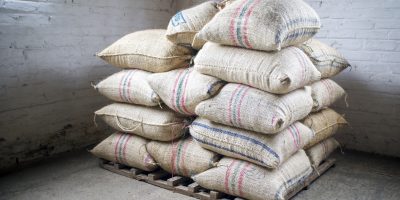Coffee Processing
A step by step overview
After harvesting, further processing begins. The first step is to remove any dirt and/or leaves from the fruit and filter out the defective cherries. The next step is to remove the pulp or fruit leaving behind only the coffee bean. Because you are not able to store the coffee cherries for a long time, this needs to take place within 3 to 5 hours after harvest
There are many different methods of processing, all of which have a direct impact on how the coffee will taste. Even today, many people continue to experiment with different processing methods to improve and showcase the potential for the beans. Processing methods are chosen depending on the facilities and equipment that are available to the farmer and whether they have enough access to water.
Honey processed, Semi-Washed, Pulped Natural

For honey process, the beans are separated from the fruit and washed (passing through a mechanical demucilaginator). During this time, depending on how intensive the wash cycle, certain amounts of mucilage are left on the bean. The amount of pulp remaining on the bean will determine whether it is black, red or yellow honey process. Black honey is when most of the mucilage is left on the beans whilst the yellow has the least. In other places, the amount of mucilage left on the beans is determined by how often the parchment is turned while drying. Again, black honey is when the parchment has been turned or moved the least amount of times allowing the sugars surrounding the beans to caramalize faster, turning them black in colour. The degree of mucilage remaining on the beans will determine the flavour profile and characteristics of the coffee.
Semi washed is when the outer skin is removed from the coffee cherries mechanically leaving behind only the mucilage which is generally kept on for 1 day. After this time the mucilage is washed off and the coffee is left to dry.
Pulp natural (a term used in Brazil) is when mucilage is not fully removed after pulping and parchment is dried together with varying degrees of mucilage still attached.
Natural processed/Unwashed Sundried

This method of processing is the most natural and uses the least amount of resources. It is where the coffee cherries are laid out in the sun after harvest with the cherry still attached to the bean and parchment throughout the entire process. During regular turning, the fruits dry for up to 4 weeks until the moisture content of the bean is reduced by 10-12%. The hull (both the dried pulp and parchment) is then removed mechanically leaving behind green coffee. Beans that have undergone natural processing resemble the flavour similar to that of the fermented cherry.
Washed processed

Here the pulp and mucilage are mechanically removed from the beans and placed in a large water basin where they are left to ferment for 24-36 hours. They are then left to dry for several days in the sun.
The final stages before export
They are then put through a mill to remove the last layer of dry skin; the parchment (which has been protecting the beans from aging). They are then cleaned and sorted according to colour, size, density and quality before exported around the world. Depending on the region and the farm, this step can be done manually or electronically with sorting machines.




